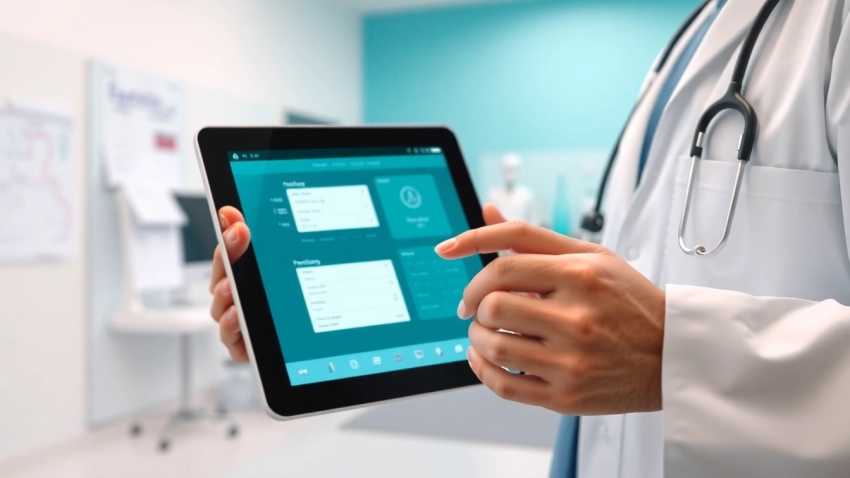
Maximizing Efficiency with Effective Eprescribing Software Solutions
Understanding Eprescribing Software
What is Eprescribing Software?
Eprescribing software, a digital tool used by healthcare providers, simplifies the prescribing process by allowing doctors to send prescriptions directly to pharmacies electronically. This innovative solution streamlines the traditional method of handwriting prescriptions, reducing the chances of errors and enhancing patient safety. By integrating with electronic health records (EHRs) or functioning as a standalone application, eprescribing software enables clinicians to access patient information quickly, check medication history, and verify allergies or drug interactions, ensuring optimal treatment for patients. You can explore more about the benefits of this technology in the realm of healthcare through comprehensive resources and insights on eprescribing software.
Benefits of Using Eprescribing Software
The transition from paper-based prescriptions to electronic systems has brought numerous advantages to healthcare providers, patients, and pharmacies alike. Here are some notable benefits:
- Increased Efficiency: Eprescribing software allows for instant transmission of prescriptions, eliminating delays associated with faxing or delivering paper prescriptions.
- Improved Patient Safety: By providing automatic checks for allergies and drug interactions, it minimizes the risk of errors that could arise from handwriting misinterpretations.
- Cost-Effectiveness: Reducing paper use and streamlining the prescribing process can lead to lower operational costs for medical practices.
- Better Patient Compliance: Access to medication management features can encourage patients to adhere to their prescribed therapies, improving overall health outcomes.
- Data Analytics: Many eprescribing systems offer analytics tools that help providers track prescribing habits, manage formularies, and identify trends in patient medication adherence.
Key Features to Look For
When selecting an eprescribing software, it’s essential to evaluate various features that can enhance the functionality and usability of the system. Some key features to consider include:
- Integration Capabilities: Ensure the system can seamlessly integrate with existing EHR systems and pharmacies to facilitate smooth operations.
- Prescription Tracking: The ability to track prescriptions from creation to fulfillment allows providers to monitor patient adherence efficiently.
- Patient Communication: Look for software that provides tools for communicating with patients regarding their prescriptions, including updates and refill reminders.
- User-Friendly Interface: A simple and intuitive user experience reduces the training time for staff and minimizes resistance to adopting the new technology.
- Compliance Support: The software should support compliance with regulations such as the Drug Enforcement Administration (DEA) requirements for controlled substances.
Implementing Eprescribing Software in Healthcare Practices
Steps for Successful Software Integration
Implementing new software in a healthcare setting can be challenging, but organizing the integration process effectively can lead to a successful transition. Here are several steps to follow:
- Conduct a Needs Assessment: Evaluate the specific needs of your practice to determine which features are essential in an eprescribing solution.
- Select the Right Software: Research and choose a system that aligns with your needs, including options for scalability, user support, and additional features.
- Plan for Training: Develop a comprehensive training plan for staff members to ensure they are comfortable and proficient with the new system.
- Test the System: Conduct a pilot run of the software to identify any issues and gather feedback from users before full implementation.
- Monitor and Evaluate: After implementation, continuously monitor the system’s performance and gather user feedback to make necessary adjustments.
Training Staff on Eprescribing Best Practices
Proper training is crucial for maximizing the effectiveness of eprescribing software. Effective training should cover:
- System Navigation: Ensure staff members are well-versed in navigating the software to utilize its full capabilities effectively.
- Best Prescribing Practices: Educate staff on the proper procedures for using the software, such as how to input data and check for interactions.
- Patient Engagement: Train employees on how to assist patients with any inquiries related to their prescriptions and how to reassure them about this digital approach.
Managing Transition from Paper to Digital
Transitioning from traditional paper prescriptions to digital systems can present challenges. Here are steps to facilitate a smooth shift:
- Communicate Changes: Clearly communicate the transition plan to all stakeholders, including staff and patients.
- Incremental Phasing: Consider gradually implementing the eprescribing software to allow users to adjust to the new system.
- Provide Continuous Support: Establish a support system for staff to inform supervisors of any difficulties faced during the transition.
Enhancing Patient Care with Eprescribing Software
Improving Medication Management
Eprescribing software plays a significant role in improving medication management. By having immediate access to patient records, clinicians can make informed decisions regarding medication dosages, potential allergies, and interactions with other drugs. Electronic records also help ensure that patients receive their medications on time, promoting better adherence and overall health outcomes.
Addressing Common Patient Concerns
Patients may have concerns when transitioning to eprescribing, such as data privacy and the reliability of electronic prescriptions. To address these concerns:
- Educate Patients: Provide clear information on how their data is protected and clarify the efficiency and safety of electronic prescriptions.
- Solicit Feedback: Encourage patients to share their thoughts and experiences with the process to improve systems and reassure them of their concerns.
Utilizing Data for Better Outcomes
Data gathered from eprescribing software can provide valuable insights into prescribing habits and patient outcomes. Healthcare providers can analyze this data to:
- Identify Trends: Discover patterns in patient prescriptions that may lead to the improvement of care strategies.
- Optimize Treatment Plans: Adjust treatment protocols based on data feedback, enhancing overall patient management.
Compliance and Security in Eprescribing
Navigating Legal Requirements
Healthcare providers must navigate a complex landscape of legal and regulatory requirements while implementing eprescribing software. Compliance with laws such as HIPAA (Health Insurance Portability and Accountability Act) ensures the protection of patient information and adherence to safe prescribing practices is essential.
Protecting Patient Information
Protection of patient information in digital environments is paramount. Eprescribing software must incorporate robust security measures, including encryption, access controls, and audit trails, to safeguard sensitive data against breaches and unauthorized access.
Best Practices for Secure Eprescribing
To mitigate potential security risks, healthcare providers should adopt best practices such as:
- Regular Software Updates: Ensure the eprescribing software is regularly updated to protect against security vulnerabilities.
- Staff Training on Security: Provide training on security protocols and the importance of safeguarding patient data.
- Monitoring and Auditing: Establish continuous monitoring processes to detect and respond promptly to any suspicious activities.
Evaluating the Impact of Eprescribing Software
Performance Metrics to Assess Efficiency
To evaluate the effectiveness of eprescribing software, practices should utilize key performance indicators (KPIs), including:
- Prescription Accuracy Rates: Measure the accuracy of prescriptions filled based on electronic inputs compared to historic data.
- Patient Compliance Rates: Track adherence levels by assessing the number of refills and medication pickups.
- Operational Efficiency: Analyze time saved in administrative tasks related to medication prescribing.
Collecting Feedback from Healthcare Providers
Continuous improvement is vital for effective eprescribing. Collecting feedback from clinicians using the software can identify bottlenecks and areas for optimization. Surveys and regular check-ins can facilitate ongoing development and adaptation to user needs.
Future Trends in Eprescribing Technology
The future of eprescribing technology is promising, with innovations such as artificial intelligence and machine learning beginning to emerge in the field. These advancements may lead to predictive analytics in medication management, offering prescribers data-driven insights to enhance patient outcomes, optimize formularies, and customize treatment plans.












Leave a Reply